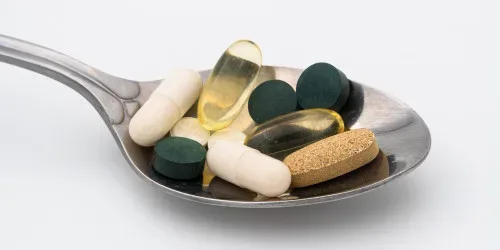
Essential nutrients for the body
The macronutrients and micronutrients are essential for the body’s energy production, tissue formation and growth, regulation of biological processes, and prevention of deficiencies and diseases.
Macronutrients are represented by carbohydrates, lipids, and proteins.
Micronutrients consist of vitamins and minerals.
The importance of vitamins and minerals
Micronutrients cannot be synthesized in the body (they must be obtained through diet) and are required in small quantities (milligrams or micrograms per day).
All vitamins and minerals play an extremely important role in the proper functioning of the body, but excessive or insufficient amounts of some microelements can cause significant imbalances. A varied diet is necessary to ensure the necessary nutrients.
Classification of vitamins according to solubility
Vitamins – their classification is based on solubility:
– Liposoluble vitamins (vitamin A, D, E, K). These can be stored in the body, and regular intake is not necessary. Excessive intake can lead to accumulation and toxicity.
– Hydrosoluble vitamins (vitamin C, B-group vitamins: B1, B2, B3, B5, B6, B8, B9, B12). These cannot be stored in the body, and regular intake is necessary. Excess is excreted through urine, and there is no risk of toxicity.
Vitamins, being organic substances, are vulnerable to destruction by heat, light, and chemicals.
Classification of minerals according to the minimum daily intake required
Minerals – their classification is based on the minimum daily intake required:
– Macrominerals (required in quantities >100mg/day): calcium, phosphorus, magnesium, sodium, potassium, chloride, sulfur.
– Microminerals (required in quantities <100mg/day): iron, iodine, zinc, copper, manganese, chromium, cobalt, selenium, molybdenum, fluorine.
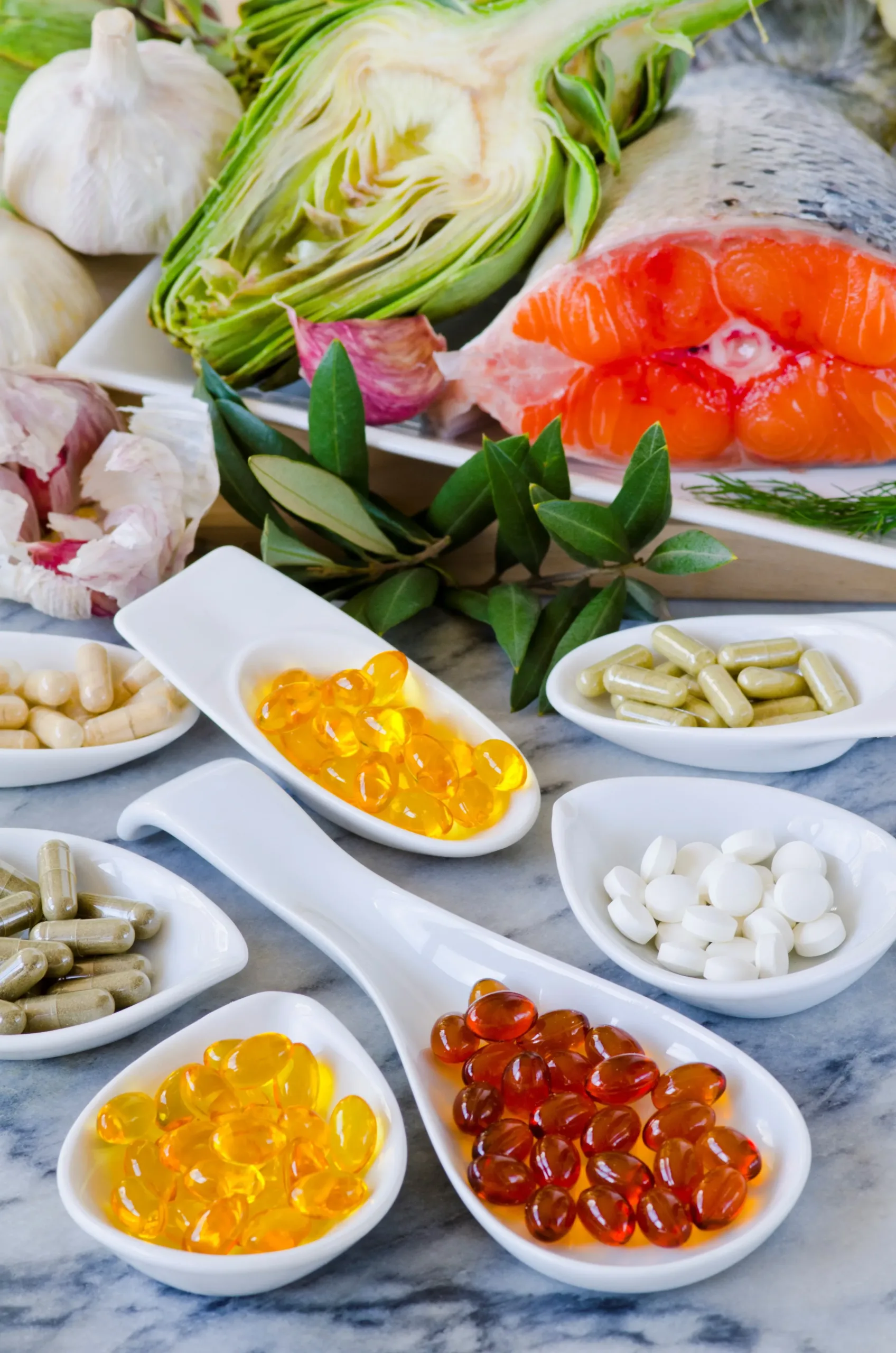
Minerals cannot be destroyed by heat, air, acid, or mixing, as they are inorganic substances. They can only be lost from food when the water in which they were cooked is discarded.
Food supplements with vitamins and minerals
Unfortunately, food supplements containing vitamins and minerals are excessively promoted and consumed, with many being taken without medical prescription. Among the reasons a doctor may recommend the use of vitamin and mineral supplements are certain health problems, for individuals following a vegetarian/vegan diet, for pregnant women or those planning to become pregnant, or for breastfeeding individuals.
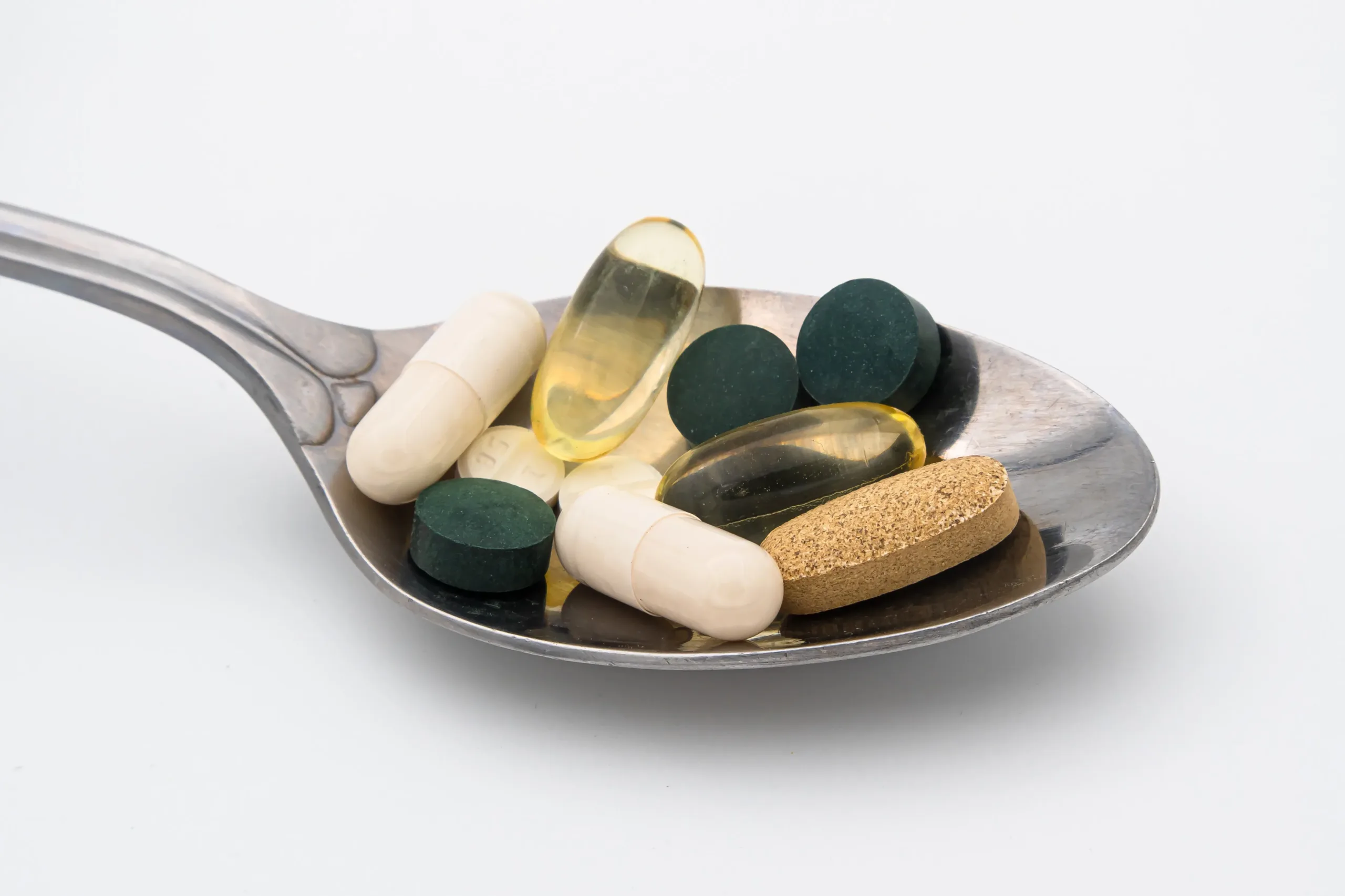
The risk of excess vitamins and minerals
Vitamins and minerals are not dangerous, except when consumed in doses much higher than the recommended daily allowances. Therefore, upper limits of consumption have been established for some vitamins and minerals, which should not be exceeded on any given day.
The importance of a healthy and varied diet
While some individuals have a healthy and varied diet, which is the best way to provide the body with all the necessary nutrients, there are also people who do not obtain/absorb sufficient vitamins and minerals from their daily diet. In such cases, a doctor may recommend a specific supplement.
The recommended daily allowances (RDA) and hypervitaminosis/toxicity of fat-soluble vitamins
1. Vitamin A:
– RDA: adults – 900 micrograms for males, 700 micrograms for females
– RDA: during pregnancy – 770 micrograms
– RDA: during lactation – 1300 micrograms
– Hypervitaminosis can occur with a chronic intake 10 times higher than the RDA, leading to symptoms such as anorexia, vomiting, headache, alopecia, joint and bone pain.
2. Vitamin D:
– RDA: 5 micrograms (400 IU) for individuals between 6 months and 50 years old
– RDA: 10 micrograms (600 IU) for individuals between 51 and 70 years old
– RDA: 15 micrograms (800 IU) for individuals over 71 years old
– Toxicity is associated with excessive ingestion of vitamin D supplements, causing symptoms such as anorexia, vomiting, and high blood pressure.
3. Vitamin E:
– RDA: 15 mg (22.4 IU) for adults
– RDA: 19 mg (28.4 IU) during lactation
– Toxicity is extremely rare, and the body can tolerate doses 100 times higher than the necessary amount. Very high doses can cause myasthenia, fatigue, nausea, and diarrhea.
4. Vitamin K:
– RDA: 120 micrograms for males, 90 micrograms for females
– Toxicity is related to the use of synthetic vitamin K (menadione). Intravenous administration of vitamin K can cause anaphylactic reactions.
The recommended daily allowances (RDA) and excess for water-soluble vitamins
1. Vitamin B1 (thiamine):
– RDA: 1.2 mg for males, 1.1 mg for females
– RDA during pregnancy and lactation: 1.4 mg
2. Vitamin B2 (riboflavin):
– RDA: 1.1-1.3 mg
3. Vitamin B3 (niacin/vitamin PP):
– RDA: 16 mg for males, 14 mg for females
4. Vitamin B5 (pantothenic acid):
– RDA: 5 mg
5. Vitamin B6 (pyridoxine):
– RDA: 1.3 mg for adults up to 50 years old
– RDA: 1.7 mg for individuals over 50 years old
– RDA during pregnancy: 1.9 mg
– RDA during lactation: 1.5 mg
6. Vitamin B9 (folate):
– RDA: 400 micrograms for adolescents and adults
– RDA during pregnancy: 600 micrograms
7. Vitamin B12:
– RDA: 2.4 micrograms
8. Vitamin H:
– RDA: 30 micrograms
9. Vitamin C:
– RDA: 90 mg for males, 75 mg for females
– Smokers may require an additional 35 mg supplementation.
The recommended daily allowances (RDA) and excess for macrominerals
1. Calcium:
– RDA: 1000 mg for individuals aged 19-50 years old
– RDA: 1200 mg for individuals over 50 years old
– RDA: 1300 mg for children, pregnant women, and breastfeeding individuals
– Excess can lead to hypertension, constipation, and kidney stones.
2. Magnesium:
– RDA: 400 mg for males, 310 mg for females
– RDA for individuals over 50 years old: 400 mg for males, 320 mg for females
3. Phosphorus:
– RDA: 1250 mg for individuals under 18 years old
– RDA: 700 mg for individuals over 18 years old
4. Sodium:
– RDA: 1300 mg for individuals aged 51-70 years old
– RDA: 1200 mg for individuals over 70 years old
– RDA for young adults, pregnancy, and breastfeeding: 1500 mg
– Excess can cause edema and hypertension, but as long as water needs are met, this toxicity is not a problem.
5. Chloride:
– RDA: 2300 mg for individuals aged 19-50 years old, pregnancy, and breastfeeding
– RDA: 2000 mg for individuals over 50 years old
6. Sulfur:
– No recommended intake has been established.
The recommended daily allowances (RDA) and excess for microminerals
1. Iron:
– RDA: 8 mg for males, 18 mg for females, 27 mg during pregnancy
– Excess iron absorption is reduced when iron stores are full.
2. Iodine:
– RDA: 150 micrograms for adults, 220 micrograms during pregnancy, 290 micrograms during lactation
3. Zinc:
– RDA: 11 mg for males, 8 mg for females
4. Copper:
– RDA: 890 micrograms for adults, 1000 micrograms during pregnancy, 1300 micrograms during lactation
5. Chromium:
– RDA: 30-35 micrograms for males, 20-25 micrograms for females
6. Selenium:
– RDA: 55 micrograms for adults, 60 micrograms during pregnancy, 70 micrograms during lactation
7. Manganese:
– RDA: 2.2 mg for males, 1.8 mg for females, 2 mg during pregnancy, 2.6 mg during lactation
8. Fluorine:
– RDA: 3-4 mg
If a particular micronutrient is not recommended for supplementation by a doctor, it is important to consider the need to analyze certain aspects resulting from the potential supplementation of that micronutrient. Always consult with your current doctor or a registered diet
Bibliography:
- “Abecedar de nutriție. Să devenim proprii noștri nutriționiști”, profesor doctor Nicolae Hâncu și colaboratori, Editura Sănătatea Press, 2012.
- “Ghid practic de nutriție și dietetică”, Andreea Gherasim, Otilia Niță, Alina Onofriescu, Editura “Gr.T.Popa”, U.M.F. Iași, 2017.
- FDA – Food and Drug Administration – Fortify your knowledge about vitamins. https://www.fda.gov/consumers/consumer-updates/fortify-your-knowledge-about-vitamins
- NIH – National Institutes of Health – Dietary Supplements https://www.nia.nih.gov/health/dietary-supplements
Iulia Rosu
"Sunt absolventa a Universitatii de Medicina si Farmacie “Gr.T.Popa” – Iasi, Facultatea de Medicina, Specializarea Nutritie si Dietetica, continuandu-mi studiile de Master în “Nutritie si dietetica profilactica si curativa” la UMF Iasi. Am absolvit cursul de “Instructor de Fitness si Personal Trainer” în anul 2018, iar anul 2019 a fost primul meu an competitional la categoria Bikini Fitness. Concursurile la care am participat au fost Etapa Zonala a Campionatului National de Culturism si Fitness – Moldova, unde m-am clasat pe locul 2 si Tiger Classic unde am obtinut locul 4. Mi-am descoperit pasiunea pentru sport de mica, alergat, mers pe role, bicicleta, handbal, tenis de camp si fitness în present, iar pasiunea pentru o alimentatie sanatoasa am descoperit-o ceva mai târziu. Profesia pe care mi-am ales-o, nutritionist si dietetician, îmbina aceste doua pasiuni, care sunt, totodata, si componentele esentiale ale unui stil de viata sanatos. Am participat la congrese ale “Federatiei Române de Diabet, Nutritie si Boli Metabolice”, si la Conferinta anuala “Preventia obezitatii la vârsta copilariei”, evenimente care, pe lânga faptul ca m-au ajutat sa-mi maresc bagajul de cunostinte, mi-au întarit convingerea ca “Viitorul apartine celor care cred în frumusetea viselor lor.” Mi-am dorit sa ma implic si în proiecte umanitare, cu impact pozitiv asupra societatii, si astfel, pentru o scurta perioada de timp am fost voluntar în cadrul Programului “Traista cu sanatate. Traditii sanatoase pentru copii sanatosi”. Programul propune prevenirea obezitatii la copii si îmbunatatirea stilului de viata. Ca plan de viitor, îmi propun sa ma specializez pe Nutritie Sportiva. Pentru o mai buna performanta în sport, este importanta asumarea unui comportament alimentar correct, acest concept si aplicabilitatea lui fiind diferite de alimentatia optima a unei persoane, care efectueaza activitati fizice doar pentru întretinerea unui stil de viata sanatos. "Viitorul apartine celor care cred in frumusetea visurilor lor." "
Recent Posts
Related Articles
CrossFit exercises practiced outdoors or at home
Concentration and discipline are indispensable for succeeding in any training program, regardless...
July 27, 2023Health guide for “ageless” women
Discover the Benefits of Physical Exercise and the Best Types of Training...
July 27, 2023Home-Based Pregnancy Workout in Comfort
The Benefits of Prenatal Home Workout The way we interact with people...
July 10, 2023Associating Seasons with the Cyclical Rhythm of Women
Indecision Among Women: A Closer Analysis of Its Cyclical Nature Many voices...
July 10, 2023




















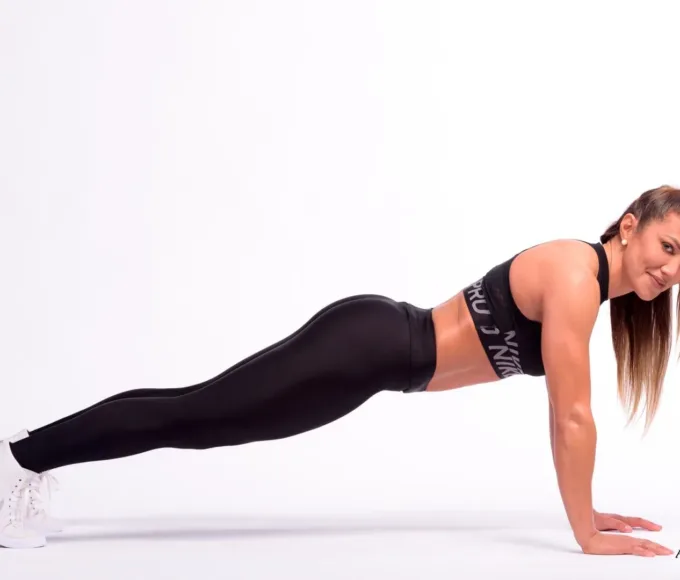



Leave a comment